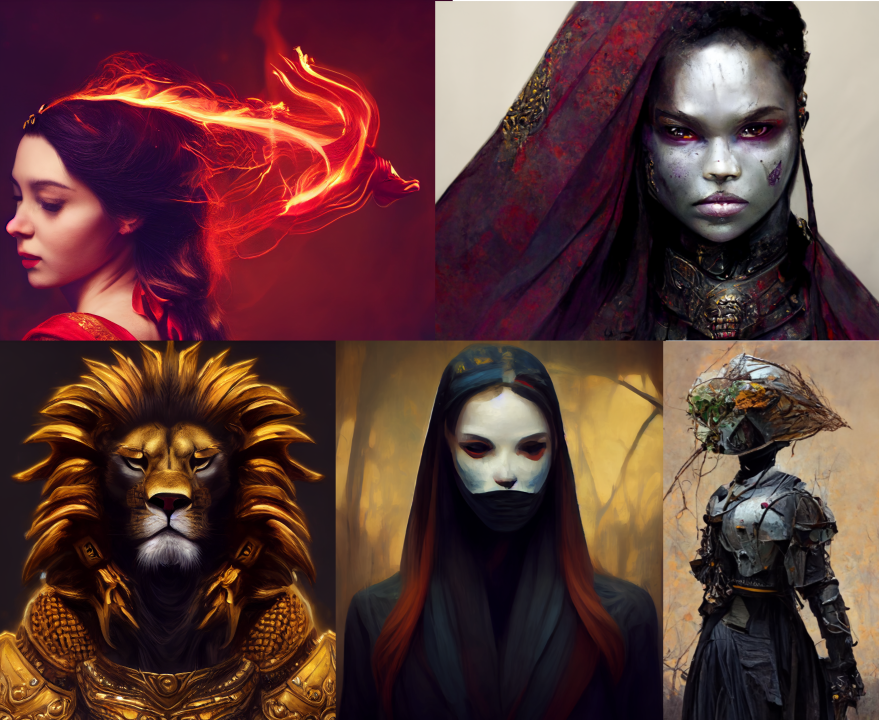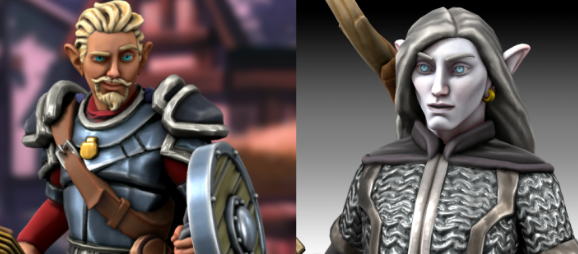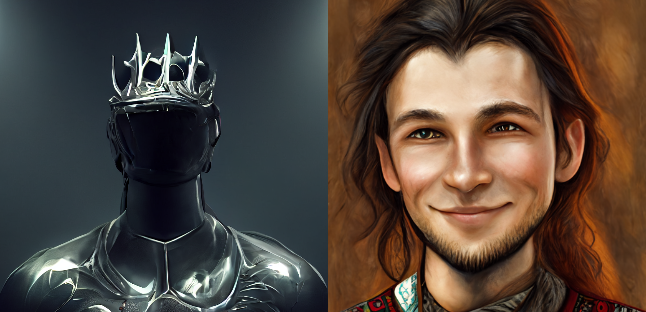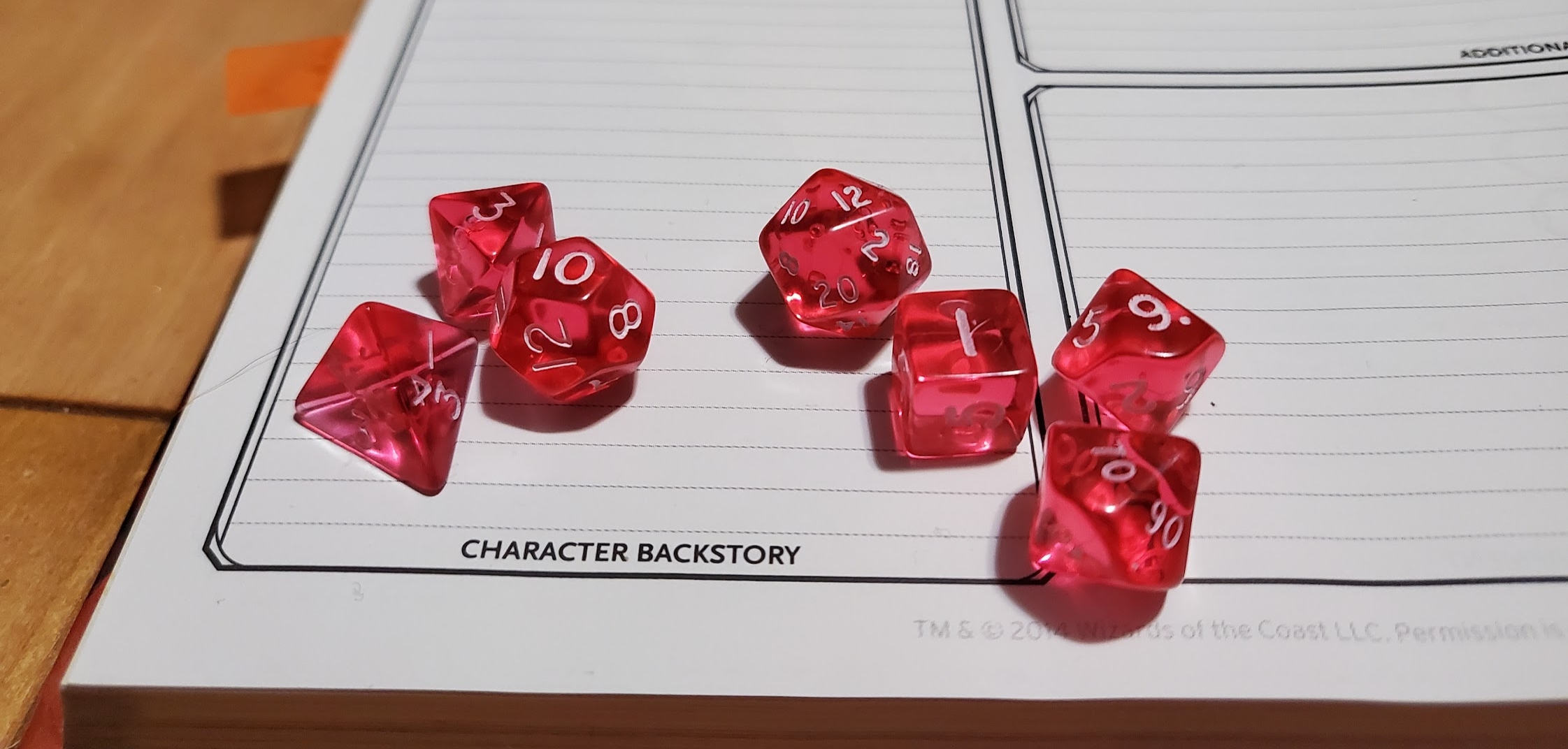The character sheet is a core facet of most tabletop roleplaying games. The majority of players would scoff at the idea of playing without one. Recently, I ran an adventure where the characters started with no memories at all. For this Dungeons and Dragons amnesia campaign, the players started the first session with blank character sheets. They agreed to let me make their characters and didn’t see them in advance. As they discovered things about themselves, they could fill it in on their sheets.
Disclaimer: I did not invent this concept. My campaign was inspired by this image (that I believe comes from tumblr), sent to me by one of my players:

This idea bounced around my head for a long time. Every now and then when I was designing new adventures, my brain would wander back to this. Finally, I decided I absolutely HAD to try it. Here’s the introduction to it from my TikTok:
@epicfreddnd Follow up to @EpicFredDnD My players let me make them characters and went into a new campaign without any knowledge of them (and loved it)! #dnd #dndtiktok #dnd5e #onednd #ttrpg #dndideas #dndcampaign #dndstorytime #dungeonsanddragons #dungeonmaster ♬ Epic Music(863502) – Draganov89
This blew up a bit (497k views as of writing) and resulted in many requests for video summaries, a written adventure guide, and even a novelization. As a result, I did the video summaries and am making genuine attempts at the other two. For now I thought I’d do a blog post.
My Amnesia Campaign
The inspiration suggested doing it as a one-shot – an adventure designed to be run in a single sitting. Evidently, I’m really bad at planning those. Like, REALLY bad. My adventures always run a little long. So instead of making a one-shot, I decided to make it a short adventure that played over 5 – 8 sessions. I planned for 5, it took us 8. Also, since this was going to be a short campaign with veteran players, I figured why not pull out the big guns: these unseen characters were level 16.
Given that my players gave me permission to make their characters, I decided that it would work best if the narrative centered around them. Everything about the campaign continued to come back to the characters, their past actions, and their allies (and enemies). This made it so that while the players discovered their characters, the plot itself continued to push more character discovery. I felt that this helped keep the focus tight and on the characters themselves.
From my perspective, there are two important factors that made this work. First, I’ve known the players in this group for many years (with the exception of one, whom I’ve known for about two and half). This meant that I had a good idea of the kinds of characters they would be interested in and what they’ve played before. Second, I sent out a questionnaire (though google forms) asking them to tell me their three most desired classes, any races/classes they wanted to veto, as well as anything they were not okay with appearing in their backstory. Setting ground rules/boundaries is extremely important in any roleplaying game, but it felt especially important in creating a character for someone else.
The Characters
Taking into account the players and their preferences, I decided to try something new to me: generating some AI portraits using Midjourney. Note: There is a lot of controversy surrounding the ethical/copyright implications of algorithmically generated art. As such, I only use it for personal games. The character art was very important to how I intended to start the campaign – more on that in a bit – so I wanted to make sure I had something representative of each character.

Credit: Epic Fred via Midjourney.
Outside of paying for custom art, or generating AI art, there are also other options available. As I often do for my home games, you can always scour the thousands upon thousands of pieces of character art online until you find something you like. Alternatively, you can use custom miniature software, like Hero Forge to create art for your character. Below are two of my own characters created that way.

So the characters all had art and were created at level 16. I made them all single class for the sake of simplicity and kept their inventories fairly minimal (with a few magic items each). The five characters were:
- Cylfreja the Dancing Flame – Eledrin Warlock with a Genie Patron.
- Deathwalker Nelvane – Half Orc Cleric of the Circle of Death.
- Dreos Last of the Embermane – Leonin Fighter, Rune Knight.
- Imirim the Risen Shadow – Fallen Aasimar Ranger, Gloomstalker.
- Riza Child of the Autumn Leaves – Warforged Druid, Circle of Dreams.
Notice that each name also comes with a title of some sort. I enjoy titles being earned throughout long-running campaigns. Since this campaign was already starting at a high level, I felt it would add more depth and background to the characters to give each a title.
If you are interested in learning more about these characters, I detailed them a bit here and here.
How I Ran My Dungeons and Dragons Amnesia Campaign
I did a TikTok about some of the “how”, but I’ll detail it a bit more here. The players came in completely blind. They didn’t know anything about the campaign (except that it was high level). They agreed to let me make them characters, and they knew they couldn’t see them in advance. With all of this set, they were prepared to go in as confused as their characters would be.
At the beginning of the first session, I sent each of them the art for the other four characters. I asked them to not to explicitly tell the others what they looked like, just use descriptive words. My players absolutely loved this and the exploration/discovery that came with this introduction. Also, the narrative made it so there were no mirrors in the citadel they started in, so they did not see themselves until an hour or so into the second session.

Right: The Bard, Kex, was a companion of the characters sometime before he became emperor.
Credit: Epic Fred via Midjourney.
In terms of the mechanics/stats, it was a lot of trial and error. Initially the players investigated themselves and their equipment. As they looked around the room where they woke up, and eventually ended up in a fight, they just tried to do things. Throughout I would call for rolls and tell them how they performed. I would inform them if they felt particularly adept or poor at something. In combat, I asked them to describe what they wanted to do as generally or specifically as they wished. Although they were initially uncertain, with a bit of guidance they had no trouble.
The players made actions they *knew* such as moving and attacking. While people who believed themselves to be casters would make statements about their intention and I’d find an ability/spell that matched what they were trying to do. The idea being that they didn’t “remember” their abilities, but they were still there to be used. As they discovered abilities, spells, skills, etc. the players made note of them on their character sheets. We continued this way until the end of session four when they finally got their character sheets, and a few core memories.
So, How Did it Go?
I loved this campaign. It’s one of my favourites I’ve ever run. My players really, really, enjoyed it. They enjoyed the explorative aspect at the beginning, and the discovery along the way. Having the NPCs interact with them based on memories they didn’t have was a lot of fun and allowed for constant unravelling of the story. Of the constant discovery, one of my players said “it’s like Christmas morning!”
As a Dungeon Master, I had to do a lot of work. In addition to the typical development of the narrative, NPCs, and world, I was also responsible for the development of the players’ characters. Long, detailed backstories, original personalities, fitting their gear and abilities into themes, etc. This isn’t where the extra work stopped. For the first four sessions I was also the only one that could see their sheets, so I was constantly cross checking skills, stats, and various abilities. Not only did I need to pay attention to things the players were attempting to do, but I also had to make sure to bring up any passive abilities that could be triggered.
This experiment was an absolute blast and I’d love to do it again someday. That said, I don’t know that I could with the same group without a completely different, awesome hook. It was worth all the extra work to hear the happiness and excitement it created at my table (and across D&D TikTok).
Have you ever tried a Dungeons and Dragons amnesia campaign? Tell me about it in the comments!


This was a great campaign and I’m super happy to have been able to be part of it!
I love that you guys agreed to do this, it was such a blast!